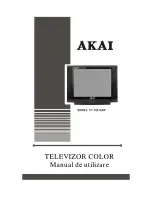
9
Noise that limits the ability to hear a weak signal on the lower bands is generally a mixture of local
ground wave and ionosphere propagated noise sources. Some installations suffer from a dominant
noise source located close to the antennas. Noise level differences between urban and rural locations
can be more than 30 dB during the daytime on 160 meters. Nighttime can bring a dramatic increase
in the overall noise level as noise propagates via the ionosphere from multiple distant sources. Since
the noise is external to the antenna, directivity can reduce noise intensity.
Consider these things about noise sources:
If noise is not evenly distributed, performance will depend on the gain difference between
the desired signal direction (azimuth and elevation) and average gain in the direction of
noise.
If noise predominantly arrives from the direction and angle of desired signals (assuming
polarization of signals and noise are the same) there will be no improvement in the signal-to-
noise ratio.
If the noise originates in the near-field of the antenna, everything becomes unpredictable. This is a
good case for placing receiving antennas as far from noise sources (such as power lines) as possible.
Ground System
The
ARAV3-4P
Active Elements work well with just a single copper ground rod placed as close as
possible to the mounting pipe. The mounting pipe can be used as the system ground if the pipe is an
adequate ground. It is recommended that a 3/4" or larger rigid copper water pipe, although
conventional copper coated steel rods may also work. Depending on soil conductivity, you can
expect better performance with multiple ground rods spaced a few feet apart. Increasing ground rod
depth beyond 5 ft rarely improves RF grounding because skin effect in the soil prevents current
from flowing deep in the soil. Avoid ground rods less than 5/8" OD. A good ground system
improves the array performance and enhances lightning survivability. It is important that each
ground system be the same for each active antenna in the array.
You can test ground quality by listening to a steady local signal. Attach 15 ft of wire laid in a
straight line (away from the coaxial feedline) to the initial 4 ft to 6 ft ground rod. If you observe a
change in signal or noise level, you need to improve the ground. A second rod spaced a few feet
away from the first one may correct the problem or 10 to 12 ground radials, each 15 ft long, should
provide a sufficient ground system for most soil conditions. If a good ground cannot be established,
use an optional
DXE-RFCC-1
Receive Feedline Current Choke that will further decouple the
feedline from the antenna and reduce common mode current and associated noise from the feedline.
Lightning Protection
While amateur radio installations rarely suffer damage from lightning, the best protection is to
disconnect electrical devices during storms. The key to lightning survival is to properly ground
feedlines and equipment and to maintain the integrity of shield connections. A proper installation
improves lightning protection and enhances weak signal receiving performance.










































